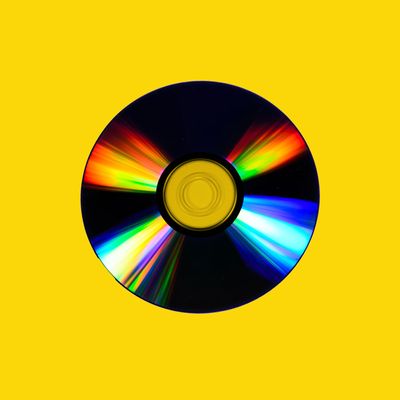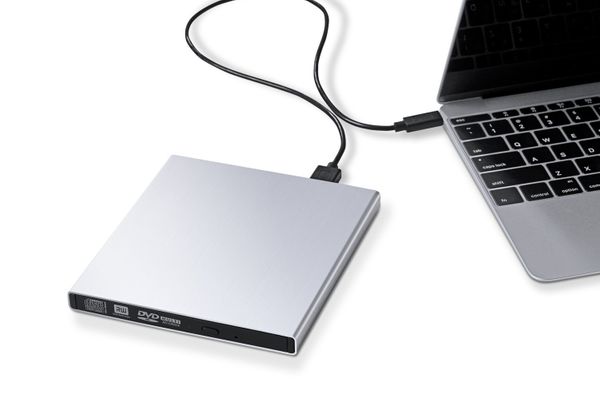
Earlier this year, I found myself caught in a MacBook-induced conundrum. I had just rediscovered the late ’90s and early 2000s psychedelic progressive metal band Tool. In a music world gone totally online, Tool remains one of the few stubborn holdouts of the anti-steaming age. With no (legal) streaming options available, I had to settle for enjoying the band’s surreal haunting sounds via a highly compressed, bootleg YouTube video.
I had to resort to YouTube because my MacBook, like many modern laptops discarding obsolete tech in pursuit of skinniness, does not have an optical disc drive. (In fact, it doesn’t even have a standard USB port, only the newer USB-C.) Frustrated, I gave in and begrudgingly bought a $40 optical drive off of Amazon.
It was one of the best purchases I’ve made all year. After some initial trouble relearning how to rip a disc into iTunes, I found myself sitting on the couch, headphones on, with the volume cranked up, enjoying my rare music and feeling justified in my purchase. I’d forgotten how great physical media can sound — uniquely whole — and my CD nostalgia trip left me with a desire to find and play more of these ancient tech artifacts.
On a recent trip back home to Texas, I combed through a long-forgotten cabinet in my bedroom, opened it up and pulled out a Playstation 2 game case I’d used to store all kinds of discs — games, music, and otherwise. After literally brushing off years’ worth of dust, I flipped through the pages, reminiscing on my past gems as well as some comically misguided music choices. I loaded each album into my external drive and listened to one after another from start to finish. I soon realized that something more powerful than a mere trip down memory lane was occurring.
Despite its flaws and imperfections, the CD format, by its very nature, encourages listeners to hear an album as one succinct, completed work. This might seem obvious, but my forced encounter with albums absent from Spotify, like Tool, left me with an unpleasant realization: I never listen to albums from start to finish on Spotify. Likewise, artists are no longer making tracks with an album in mind at all.
Last year, Pitchfork discussed how instant data feedback from streaming services like Spotify are having a direct impact on the way artists choose to structure and produce music:
The unprecedented wealth of data that streaming services use to curate their increasingly influential playlists gives the industry real-time feedback on what’s working, but this instant data-fication in turn risks feeding back on itself. While streaming has undoubtedly coincided with a shift in the pop charts away from the caffeinated bravado of several years ago, streaming-era hits appear to be as rigidly defined and formulaic as ever — if not more so.
As a result, the traditional, time-consuming album structure often falls by the wayside. Instead, physical media — which is often produced for the purpose of standing on its own — has been replaced by highly specific digital media meant to fill specific consumer demands.
While bands like Tool and others once saw the internet and streaming as the death knell for physical music (and maybe it truly is), a growing number of young people are being pulled back into the worlds of vinyl, DVDs, and yes, even crummy CDs. According to Fortune, 83 percent of people between the ages 18 and 24 years old said they had purchased some form of physical media in the last year. In 2017, vinyl sales reached a 25-year high.
Despite the existence of a few odd digital holdouts like Tool, these bands cannot account for the early resurgence in physical media. The rise also has a personal element to it. According to The Guardian, younger generations are purchasing vinyl as a way of supporting their favorite artists.
My rediscovery of CDs also harkened me back to another teenage habit: buying CDs at a show. Rather than bust out $20 for another band T-shirt in the noble act of supporting an artist, only to have it forgotten in the dark depths of your closet, CDs offer that same tangible, satisfying transaction, but with a real musical connection to the artist you can enjoy over and over.
While I was forced to buy my external drive largely against my will, it ended up being one of my most significant purchases this year. It altered the way I interact with a medium so integrated into my daily life. While I’m not saying that you absolutely must go out and buy an external drive, they are a lot more affordable than they were a decade ago, when they were big, boxy contraptions that required an external power source. Nowadays, external optical drives are cheap enough and slim enough that picking one up and stashing it in your desk is a no-brainer. You never know when you’ll need it.
Heads-up: If you buy stuff through our links, New York may earn a commission. That said, we don’t recommend anything we wouldn’t buy for ourselves.






























